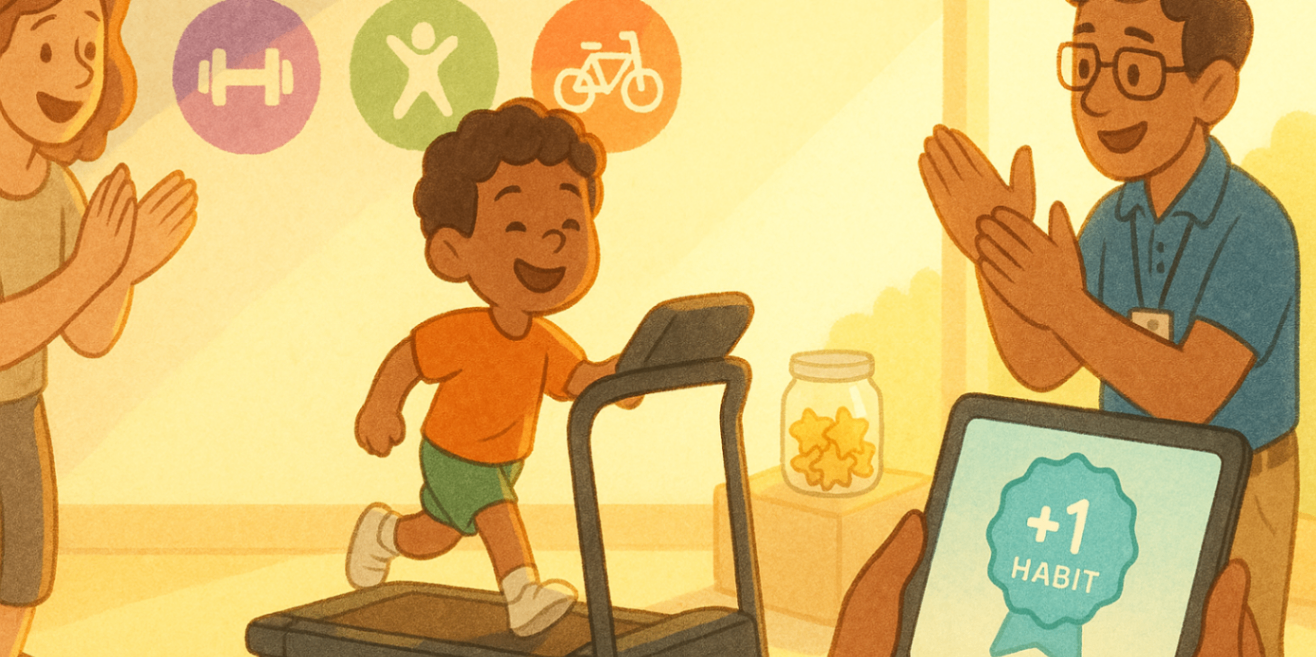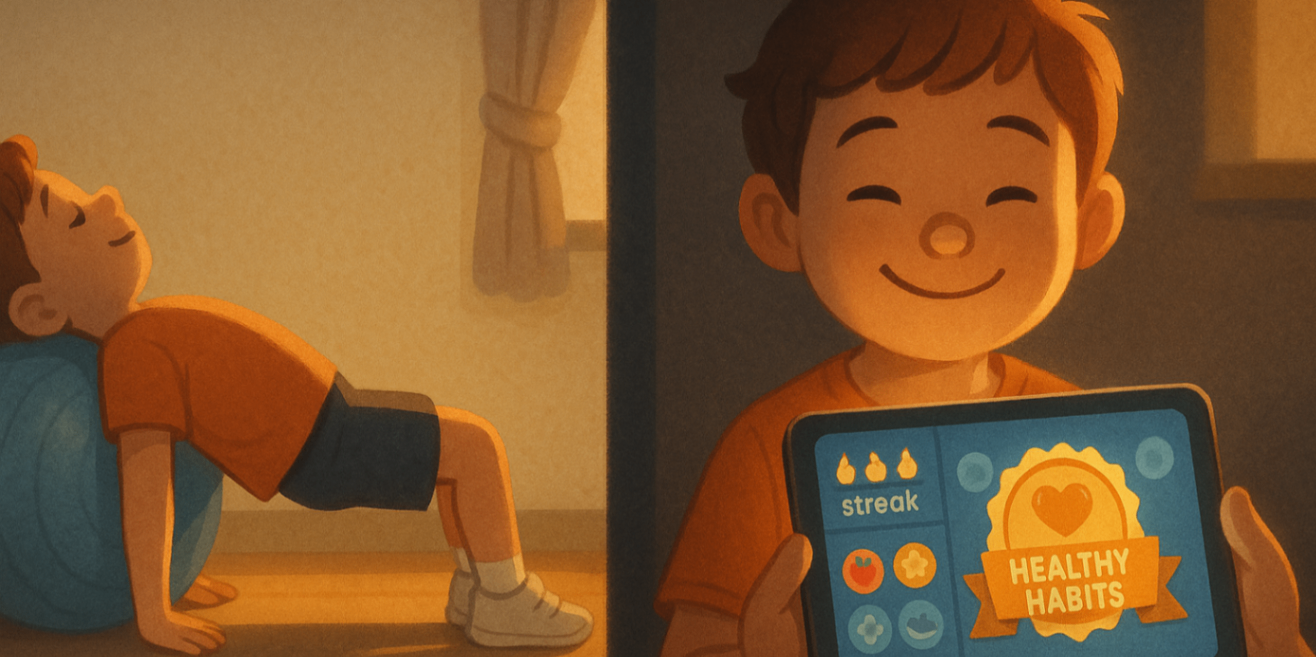
how exercise physiology builds healthy habits for life
2 September, 2025
Introduction
Starting the path to a healthy lifestyle can seem hard, but it does not have to be. What helps you stick to your wellness goals is knowing how your body works. This idea is called exercise physiology. It shows how the body acts when you do physical activity. By using what you learn from exercise physiology, you move past simple workout plans. You start to build good habits for regular exercise. This works better for you and helps keep your health good in the long run.Research suggests habit formation varies between individuals and can take several weeks to a few months; many people notice consistent behaviour change after a few weeks of steady practice.
Key Highlights
-
Exercise physiology uses science to help you build healthy habits that last a lifetime.
-
Understanding your body's response to physical activity is crucial for creating effective and sustainable routines.
-
A balanced approach incorporating aerobic, strength, and flexibility training offers comprehensive health benefits.
-
Working with an exercise physiologist provides personalised programs to manage chronic conditions and improve overall health.
-
Consistency in your exercise routine is more important than intensity for achieving long-term sustainable health.
-
Exercise physiology offers evidence-based strategies to improve cardiovascular fitness and support weight management.
The Role of Exercise Physiology in Building Lifelong Habits

Understanding exercise physiology helps you build lasting healthy habits by making you see physical activity in a new way. You stop thinking about just "working out" and start focusing on how each move helps your body change for the better. Knowing the science shows you why you do each exercise, so you get more involved and feel motivated.
An exercise physiologist is like your helper in health promotion. This person takes all that tough science and breaks it down into real steps you can follow every day. When they get to know your body, they guide you to routines that are right for you. These plans are good for your health, simple to stick with, and can even be fun, so physical activity stops feeling like a job and starts being part of the way you live.
Now, let’s look at how habit formation and always sticking with the plan matter most for building healthy habits with physical activity.
Understanding the Science Behind Habit Formation
Habit formation is not just about doing something over and over. It is about making a positive feedback loop that your brain wants to do again. Exercise physiology helps you use this idea by setting up workouts with clear benefits and without too much stress. When you get stronger, feel more energy, or notice better health, you get a strong reward in your body and mind.
The link between regular physical activity and good results becomes stronger during this process. So, you stop making yourself exercise, and instead, you start to like how it makes you feel. This feeling inside you is what keeps the habit going. An exercise physiologist works with you and uses these ideas to set up your program for slow and steady progress. This way, you keep seeing wins along your journey.
Knowing how this works helps you work with your body. If you start with tasks you can handle and then slowly make them harder, you build up physical strength. At the same time, your mind forms the routes you need for a lasting exercise habit.
Why Consistency Matters for Sustainable Health
Consistency is very important when you want to build exercise habits. The benefits of exercise, like a stronger heart and better metabolism, come from steady physical activity over time. Doing exercise only now and then, even if hard, does not give your body the regular push it needs to get better and stronger. It is the regular effort, done again and again, that tells your body to make lasting changes. This leads to sustainable health.
When you keep up with regular physical activity, it gets easier to keep going. Every session helps make the next one feel easier, both for your body and your mind. You stop asking yourself if you should work out or not. Exercise becomes a non-negotiable part of your day. Staying regular with your workouts leads to big improvements in muscle strength and how well your heart works over time.
Picture it like building a house one brick at a time. Each time you exercise, it’s like adding a brick. One brick alone cannot make a wall, but if you keep adding bricks, you will build something strong. Your health is similar; consistent effort through regular physical activity and healthy habits creates a solid base for a better life. Small steps done every day become simple yet powerful healthy habits.
Key Principles of Exercise Physiology for Healthy Living

The key ideas in exercise physiology are about how you can use physical activity to help your body work better and avoid long-term health problems. Different kinds of movement offer different health benefits. For example, doing aerobic exercise is good for your heart. On the other hand, resistance training helps you build muscles.
When you use these ideas, you make a routine that fits your own needs and goals. An exercise physiologist can help you do this in a safe and helpful way. They make sure you get the most from every session. The next parts will talk about how physical activity changes the way your body works and share simple ways to set up a routine that you can keep doing.
The Impact of Physical Activity on Body Systems
Regular physical activity initiates a cascade of positive changes throughout your body's interconnected systems. According to exercise physiology, when you engage in exercise, your cardiovascular system responds by increasing your heart rate to pump more oxygen-rich blood to your muscles. Over time, this makes your heart stronger and more efficient, contributing to improved cardiovascular fitness. How can regular physical activity improve overall health according to exercise physiology? By strengthening these fundamental systems.
Simultaneously, your musculoskeletal system adapts by building stronger muscles and denser bones, which is crucial for mobility and injury prevention. Your metabolic system also becomes more efficient at using energy, which is vital for weight management and reducing the risk of conditions like type 2 diabetes.
These adaptations work together to boost your overall health and resilience. A well-rounded exercise program doesn't just target one area; it provides a holistic stimulus that strengthens your entire body from the inside out.
|
Body System |
Effects of Regular Physical Activity |
|---|---|
|
Cardiovascular System |
Strengthens the heart muscle, improves blood circulation, lowers resting heart rate, and can reduce the risk of heart disease. |
|
Musculoskeletal System |
Increases muscle strength and mass, improves joint flexibility and range of motion, and enhances bone density, reducing injury risk. |
|
Metabolic System |
Improves metabolic efficiency, aids in weight management, and can lower the risk of type 2 diabetes. |
|
Immune System |
Boosts immune function, making the body more resilient to illness and infection. |
Evidence-Based Strategies to Establish Healthy Exercise Routines
There are some ways backed by science that help build healthy exercise habits. The main thing is to make a routine that be good and easy to keep up. It helps to try things that make you feel good and to always make a bit of progress. You should start by being real about what you can do. Pick things you like to do, too.
You do not have to push yourself with a hard hour-long workout on day one. It's better to start with short times that are easy to handle. This keeps people from getting hurt or feeling tired of working out fast. That way, you do not give up early on your new routine. When you feel stronger, you can make your workouts last longer or be a bit harder.
Here are some tips to help you get these healthy habits going and keep them:
-
Start Small: Do just 10-15 minutes at the start, then go up from there.
-
Schedule Your Workouts: Put your workout times on your calendar like you would for important plans.
-
Find a Partner: Doing exercise with a friend makes you both show up and want to keep going.
-
Track Your Progress: Looking at what you get better at helps you keep up your routine.
Over time, using these ideas will help you build and keep the healthy habits you want in your life.
Types of Exercise That Foster Lasting Habits
To make good habits last, it's key to add some variety to your routine. If you focus on just one type of exercise, you might get bored. It can also cause your muscles to be off balance. Studies say that doing both aerobic and strength training, along with flexibility moves, gives you the best health benefits. This mix also helps you stick with your plan for a long time.
What is the best type of exercise for building good habits? The ones you enjoy and that work your body in different ways. This way, each part of your body gets something out of it. It also helps stop injuries and keeps your fitness balanced. The sections next talk about the different kinds of exercise. You will see how to pick the type of exercise that fits your life and gives you strong health benefits.
Aerobic, Strength, and Flexibility Training Explained
Aerobic exercise is also called cardio. It means you move the big muscles in your body for longer periods of time. You can walk fast, swim, or ride a bike. These things make you breathe harder and your heart rate go up. They help make your cardiovascular fitness and endurance better. Current national/international guidelines recommend ~150 minutes/week.
Strength training is also known as resistance training. This kind of work helps your muscles push against weight, like lifting weights or using your own body weight. Squats, pushups, and lifting weights all build muscle strength and muscle mass. This is good for your daily life and helps keep your metabolism healthy. Try to do strength training at least two times per week. Make sure you work all the big muscle groups.
Flexibility and balance activities include stretching, yoga, or tai chi. These exercises keep your joints moving well. They help make your body more mobile, make other forms of exercise easier, and stop falls as you get older. Doing all three types of exercise gives you a strong and rounded fitness plan.
Selecting Activities for Different Age Groups and Lifestyles
The best exercise plan is the one that fits your life. There are many ways to be active, and you can pick what works for you. Older adults often work to be strong, have balance, and keep their muscles. Busy people like workouts that take less time but give high results. The lessons from exercise physiology can help people at any age and skill level.
Exercise physiology ideas can help kids form healthy habits, too. The main thing is to make sure children be active in ways that are fun. Choose things that help them be good at big movements. They can get a love for being active early. Playing, enjoying sports, and spending time with family doing physical activity can make this happen. Older adults do best with exercises that help them stay steady and strong, so they can keep their freedom.
Here are some physical activity ideas sorted by each group’s needs:
-
Children: Team sports, playground games, and swimming.
-
Busy Adults: Fast walking at lunch, online fitness classes, or hiking on the weekend.
-
Older Adults: Tai chi, water aerobics, and strength movements done in a chair.
How Exercise Physiologists Guide Habit Creation in Australia

An exercise physiologist helps people learn how to exercise in a way that is good for their health. In Australia, these health professionals are accredited and know a lot about exercise for health promotion and helping with different health problems. They do more than just personal training. They start with a health check, then make a custom program based on science.
If you want to make exercise a regular part of your life or you have health problems, injuries, or goals, their help can be very useful. They offer their skill, give you motivation, and help keep you accountable. This makes it easier for you to handle tough times and stick to your plan. With their help, the idea of better health turns into a clear and doable plan. Next, you will read about how they make programs for each person and how they help you track your progress.
Personalised Programs for Individuals and Families
An exercise physiologist will first make a plan to help you be well. This starts with a full health check that looks at your fitness, your health history, what you want to achieve, and if you have any health issues like chronic disease. This check helps the exercise physiologist make sure your exercise plan is right for your body and life.
When the health check is done, the exercise physiologist makes a program just for you. They make it safe and it works well. If you are getting better after an injury, your plan will have special exercises to help you heal. If your family wants to move more together, the program will have fun group ideas that suit people of many ages and fitness levels.
This special way is not a program that everyone gets. Your plan changes with you as you grow. The exercise physiologist does regular check-ins and changes your plan when you need it. This keeps your workouts fun and on track with your goals. It helps you stick with it and be healthy for the long term.
Monitoring Progress and Addressing Common Challenges
A big part of building a habit that lasts is seeing real results. An exercise physiologist shows you how you are doing by keeping track of things like better strength, more endurance, or how well you manage your health. The feedback lets you feel good about what you do, so you stay motivated and keep your focus on your exercise plan.
Lots of people make mistakes when they start working out. The answer is yes—an exercise physiologist knows how to help you stay away from these problems. Some people try to do too much, too soon, and this can mean injuries or getting burned out. Some also use wrong exercise form, and this makes workouts less useful and even risky.
An exercise physiologist helps you move through these tough spots by:
-
Teaching correct form and technique.
-
Helping you set realistic, achievable goals.
-
Providing strategies to stay motivated when faced with barriers like lack of time.
-
Adjusting your program to prevent plateaus and keep you engaged.
-
Ensuring your efforts contribute positively to your overall health.
Conclusion
In the end, understanding exercise physiology is key to building and In the end, exercise physiology is an evidence-based way to build and maintain lifelong healthy habits. By understanding how routines form and why consistency matters, families and individuals are more likely to follow through with positive changes that improve long-term wellbeing. Incorporating a balance of aerobic, strength, and flexibility training ensures a program that is safe, effective, and suited to different ages and abilities.
Working with an accredited exercise physiologist provides professional guidance, tailored strategies, and ongoing progress monitoring—giving you confidence that every step is based on clinical knowledge and best practice. At daar Liverpool, our team combines academic expertise with real-world experience to help children and families achieve meaningful outcomes through NDIS-supported exercise physiology.
Book your consultation today and take the first step toward building stronger, healthier habits with trusted professional support.
Frequently Asked Questions
What role does exercise physiology play in developing a personalised fitness plan?
Exercise physiology assesses your health and goals to create a safe, effective program that fits your life and supports measurable outcomes.
What are the key principles of exercise physiology that promote healthy habits?
The main ideas of exercise physiology that help people choose healthy habits are about making things personal, staying consistent, and slowly doing more over time. This field tells us to keep a balance in physical activity. People should add aerobic exercise to help with cardiovascular fitness, do strength training to build muscles, and also work on flexibility. All these things together will give you good health improvements.
How can understanding exercise physiology help individuals avoid injuries during workouts?
Knowing about exercise physiology helps you avoid getting hurt. It shows you the right way to move your body and when you should make your workout harder. It also reminds you to rest so your body gets time to heal. This is important with things like resistance training. If you do too much too soon, you can end up hurting yourself. But with what you learn, your muscle strength can build up over time in a safe and good way.
Sources:
WHO Guidelines on physical activity and sedentary behaviour (2020) — full guideline page & download: WHO guidelines on physical activity and sedentary behaviour.
.svg)












